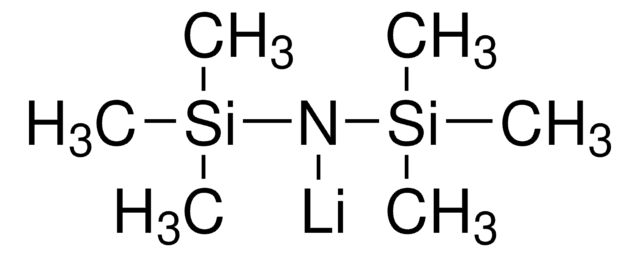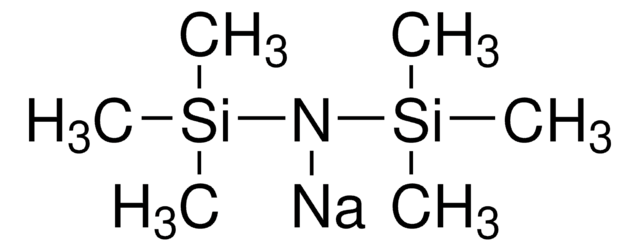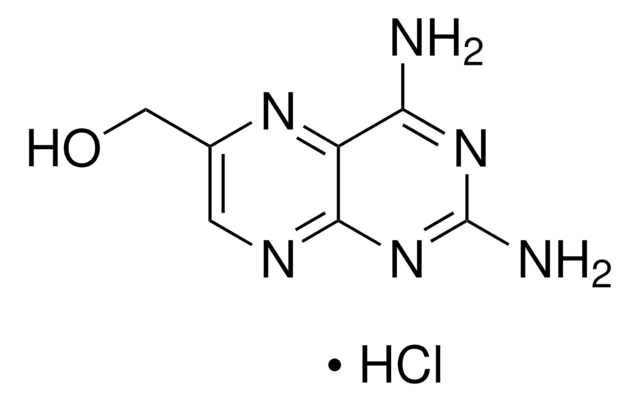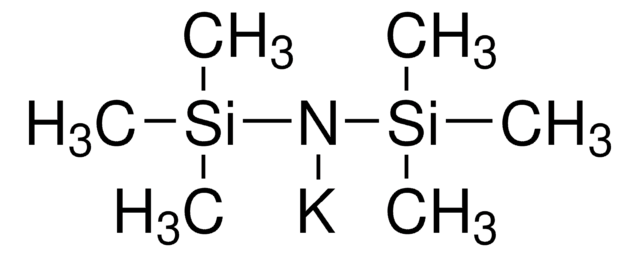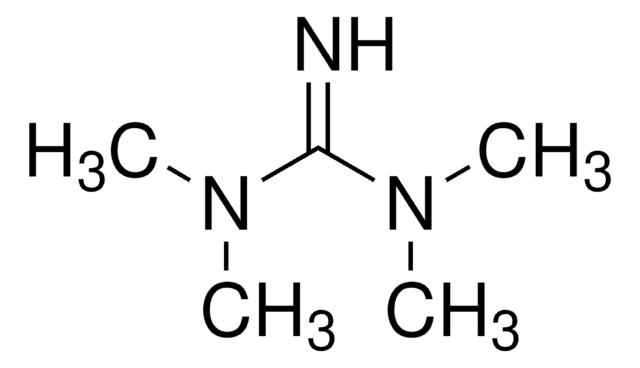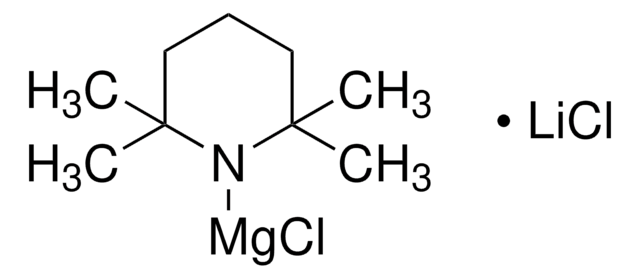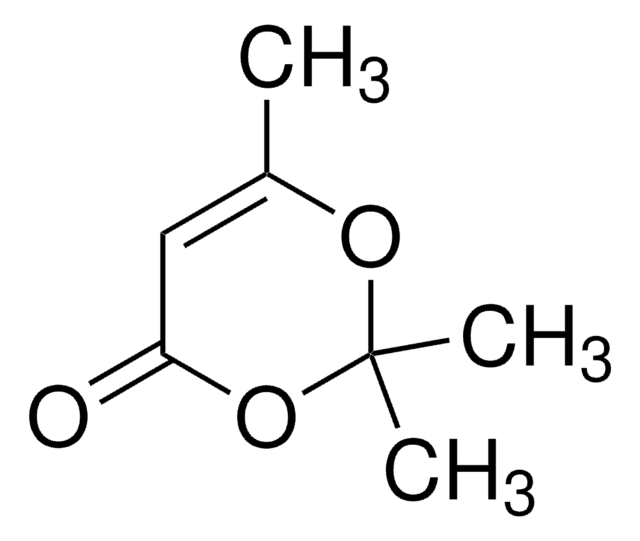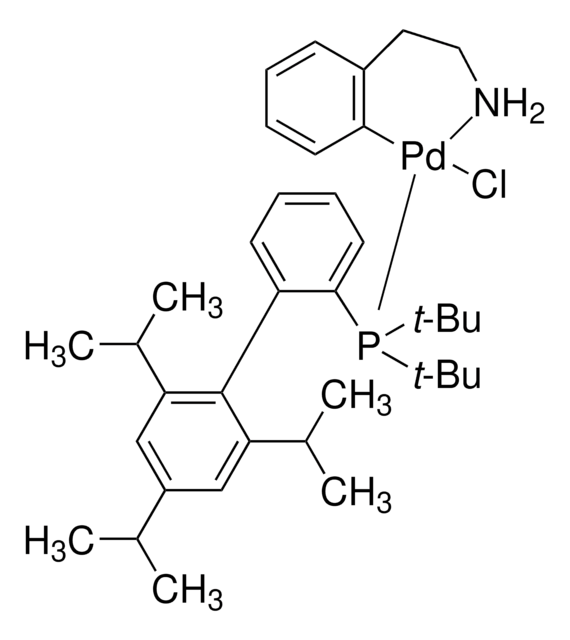추천 제품
일반 설명
Lithium bis(trimethylsilyl)amide solution (LiHMDS) is generally used in organic synthesis as a non-nucleophilic strong Bronsted base.
애플리케이션
LiHMDS can be used as a reagent:
- In the deprotonation and nucleophilic difluoromethylation reactions.
- To synthesize isoquinoline derivatives by the addition of N-iodosuccinimide (NIS) to the α-benzyl tosylmethyl isocyanides.
- To prepare arylboronic acid pinacol esters by the reaction of aryl fluorides with bis(pinacolato)diboron via palladium-catalyzed cross-coupling reaction.
Lithium bis(trimethylsilyl)amide is generally used in organic synthesis as a non-nucleophilic strong Brønsted base. It can be used for salt metathesis reaction for the synthesis of cesium bis(trimethylsilyl)amide (CsHMDS) and lithium fluoride by reacting with cesium fluoride.
신호어
Danger
유해 및 위험 성명서
Hazard Classifications
Aquatic Chronic 3 - Asp. Tox. 1 - Eye Dam. 1 - Flam. Liq. 2 - Repr. 2 - Self-heat. 1 - Skin Corr. 1B - STOT RE 2 - STOT SE 3
표적 기관
Central nervous system
보충제 위험성
Storage Class Code
4.2 - Pyrophoric and self-heating hazardous materials
WGK
WGK 3
Flash Point (°F)
48.0 °F - closed cup
Flash Point (°C)
8.9 °C - closed cup
개인 보호 장비
Faceshields, Gloves, Goggles, type ABEK (EN14387) respirator filter
이미 열람한 고객
Structural Studies of Cesium, Lithium/Cesium, and Sodium/Cesium Bis (trimethylsilyl) amide (HMDS) Complexes
Ojeda-Amador AI, et al.
Inorganic Chemistry, 55(11), 5719-5728 (2016)
Lithium and potassium bis (trimethylsilyl) amide: Utilizing non-nucleophilic bases as nitrogen sources
Bruning J, et al.
Tetrahedron Letters, 38(18), 3187-3188 (1997)
Nan Li et al.
Lab on a chip, 8(12), 2105-2112 (2008-11-22)
High-density live cell array serves as a valuable tool for the development of high-throughput immunophenotyping systems and cell-based biosensors. In this paper, we have, for the first time, demonstrated a simple fabrication process to form the hexamethyldisilazane (HMDS) and poly(ethylene
Tatsuya Nitabaru et al.
Journal of the American Chemical Society, 131(38), 13860-13869 (2009-09-10)
Full details of an anti-selective catalytic asymmetric nitroaldol reaction promoted by a heterobimetallic catalyst comprised of Nd(5)O(O(i)Pr)(13), an amide-based ligand, and NaHMDS (sodium hexamethyldisilazide) are described. A systematic synthesis and evaluation of amide-based ligands led to the identification of optimum
Juliana Tsz Yan Lee et al.
Scanning, 34(1), 12-25 (2012-04-26)
Common dehydration methods of cells on biomaterials for scanning electron microscopy (SEM) include air drying, hexamethyldisilazane (HMDS) or tetramethysilane (TMS) treatment and critical point drying (CPD). On the other side, freeze-drying has been widely employed in dehydrating biological samples and
자사의 과학자팀은 생명 과학, 재료 과학, 화학 합성, 크로마토그래피, 분석 및 기타 많은 영역을 포함한 모든 과학 분야에 경험이 있습니다..
고객지원팀으로 연락바랍니다.